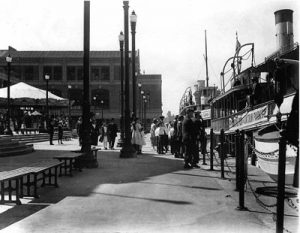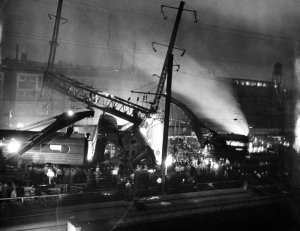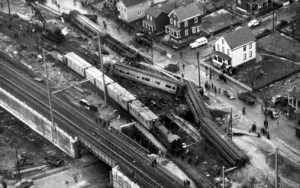train derailment
 Any kind of explosive can lead to danger. There are some industries that use explosives in their daily activities, and for the most part, all is well and people are safe. Nevertheless, there are those few situations, which always seem like they are so common, when they make the news. In reality, they are probably very rare, although I can’t say that for sure. It just seems to me that if these explosions were common, we would find a different way of doing things.
Any kind of explosive can lead to danger. There are some industries that use explosives in their daily activities, and for the most part, all is well and people are safe. Nevertheless, there are those few situations, which always seem like they are so common, when they make the news. In reality, they are probably very rare, although I can’t say that for sure. It just seems to me that if these explosions were common, we would find a different way of doing things.
On the night of February 24, 1922, in McCook, Illinois, a powder magazine exploded in a stone quarry. The quarry at McCook was on the outskirts of Chicago. The the explosion occurred, it shook the entire city. I know that explosions can be felt for miles and miles, and can even show up on seismometers. Still, Chicago is a big city. It seems odd to think that such a big city could feel the effects of an explosion, but that was just the beginning.  Windows were shattered in the south and the west portions of the city shortly before 9:30pm. People began calling the emergency numbers and calling newspapers to find out where the explosion had occurred and how many people had been killed. It seemed that no one knew at first, but soon it became obvious. An inquiry by The Associated Press to Indianapolis soon brought a bulletin from LaFayette, Indiana, that the explosion had occurred at McCook, Illinois.
Windows were shattered in the south and the west portions of the city shortly before 9:30pm. People began calling the emergency numbers and calling newspapers to find out where the explosion had occurred and how many people had been killed. It seemed that no one knew at first, but soon it became obvious. An inquiry by The Associated Press to Indianapolis soon brought a bulletin from LaFayette, Indiana, that the explosion had occurred at McCook, Illinois.
With that information they were able to find out within a few minutes that there had been an accident at the quarry which is situated in a rather secluded spot. It was found that no one had been killed, but early reports had no explanation as to how it occurred. The first definite report of the blast reached a Monon railroad signal tower at Dyer, Indiana. It was then relayed to the Monon dispatcher at LaFayette, before it came back to  Chicago over The Associated Press wire.
Chicago over The Associated Press wire.
The McCook quarry has had a long history problems that have been the direct result of quarry blasting. The quarries need to blast for loosen up the stone, but the effects can be devastating, even causing train derailments at times. The public has at times complained about the damages, but there didn’t seem to be much that could be done about it. Pictures of cracked walls and broken windows have been brought in for emphasis. I guess that until someone comes u with a better way to get the rock out of the quarry, the city will be stuck with the problem for the foreseeable future.
 I always thought that train travel was similar to air travel, and accidents were not very common. Unlike air travel, train derailments are really quite common, mostly because they are like flat tires on cars…they do happen, and depending on how fast you’re going and where you are, it can be a minor delay, or a major problem. Having a flat tire in your own driveway is no big deal, but when a tire explodes on the highway…that’s a major problem. Blowouts have been known to cause terrible accidents and deaths. Now, consider that there are over 170,000 miles of railroad track in the United States. The possibilities suddenly seem endless. The good news is that many of these “derailments” are very minor and bring no injury or death, but that is not always the case. Speed plays a huge role in the outcome of a derailment, and I don’t mean that the train was necessarily speeding, just that it was going faster than the slow, “in the yard” pace.
I always thought that train travel was similar to air travel, and accidents were not very common. Unlike air travel, train derailments are really quite common, mostly because they are like flat tires on cars…they do happen, and depending on how fast you’re going and where you are, it can be a minor delay, or a major problem. Having a flat tire in your own driveway is no big deal, but when a tire explodes on the highway…that’s a major problem. Blowouts have been known to cause terrible accidents and deaths. Now, consider that there are over 170,000 miles of railroad track in the United States. The possibilities suddenly seem endless. The good news is that many of these “derailments” are very minor and bring no injury or death, but that is not always the case. Speed plays a huge role in the outcome of a derailment, and I don’t mean that the train was necessarily speeding, just that it was going faster than the slow, “in the yard” pace.
When high speed trains first came out, they seemed pretty risky, and maybe they were, but it was only because engineers weren’t used to those speeds, and possibly the equipment wasn’t ready for those speeds  either. That would become all to obvious on September 6, 1943, when an apparent defect in an older car attached to the train, combined with the placement of a signal gantry resulted in a deadly accident. The train was called the Congressional Limited and was a newly designed train that carried its passengers through the Northeast corridor at the previously unheard-of speed of 65 miles per hour. The Congressional Limited was traveling between New York City and Washington DC, and had just left Philadelphia. It began to pick up speed as it moved northeast out of the city, The dining car, that had just been added, began to experience axle problems. That day, there were so many customers seeking to ride from Washington to New York that it was decided that another dining car should be added to the train…a car of an older design. Observers near the track reported that the axle of that older car was burning and throwing off sparks. Two miles further down the track, in Frankford Junction, Pennsylvania, the axle fell off, derailing the dining car.
either. That would become all to obvious on September 6, 1943, when an apparent defect in an older car attached to the train, combined with the placement of a signal gantry resulted in a deadly accident. The train was called the Congressional Limited and was a newly designed train that carried its passengers through the Northeast corridor at the previously unheard-of speed of 65 miles per hour. The Congressional Limited was traveling between New York City and Washington DC, and had just left Philadelphia. It began to pick up speed as it moved northeast out of the city, The dining car, that had just been added, began to experience axle problems. That day, there were so many customers seeking to ride from Washington to New York that it was decided that another dining car should be added to the train…a car of an older design. Observers near the track reported that the axle of that older car was burning and throwing off sparks. Two miles further down the track, in Frankford Junction, Pennsylvania, the axle fell off, derailing the dining car.
The derailment happened just as the train was approaching a signal gantry…a steel structure built right next to  the tracks. The gantry sliced right through the dining car, instantly killing many of the passengers on that car. Seven more cars were pulled off the tracks by the dining car. In addition to the 79 people who lost their lives, almost 100 more were seriously injured. The train was carrying 541 passengers that day, many of whom were World War II soldiers returning from leave…probably the reason that an additional dining car was needed. A subsequent inquiry placed more of the blame on the location of the signal gantry than the decision to add the old dining car to the speedy new Congressional Limited, which doesn’t make sense to me, because if the axel hadn’t fallen off, the derailment would not have happened at all, and the gantry had been there for a long time.
the tracks. The gantry sliced right through the dining car, instantly killing many of the passengers on that car. Seven more cars were pulled off the tracks by the dining car. In addition to the 79 people who lost their lives, almost 100 more were seriously injured. The train was carrying 541 passengers that day, many of whom were World War II soldiers returning from leave…probably the reason that an additional dining car was needed. A subsequent inquiry placed more of the blame on the location of the signal gantry than the decision to add the old dining car to the speedy new Congressional Limited, which doesn’t make sense to me, because if the axel hadn’t fallen off, the derailment would not have happened at all, and the gantry had been there for a long time.

